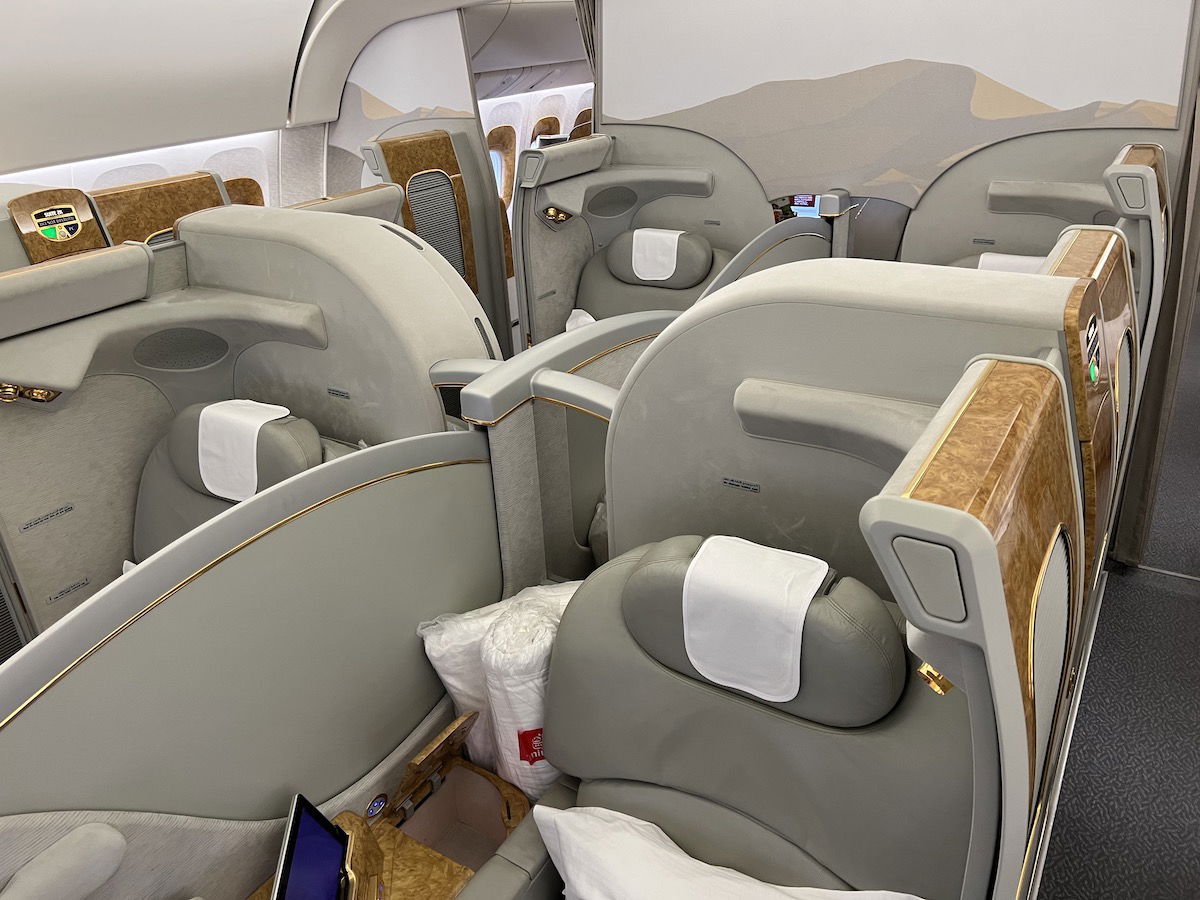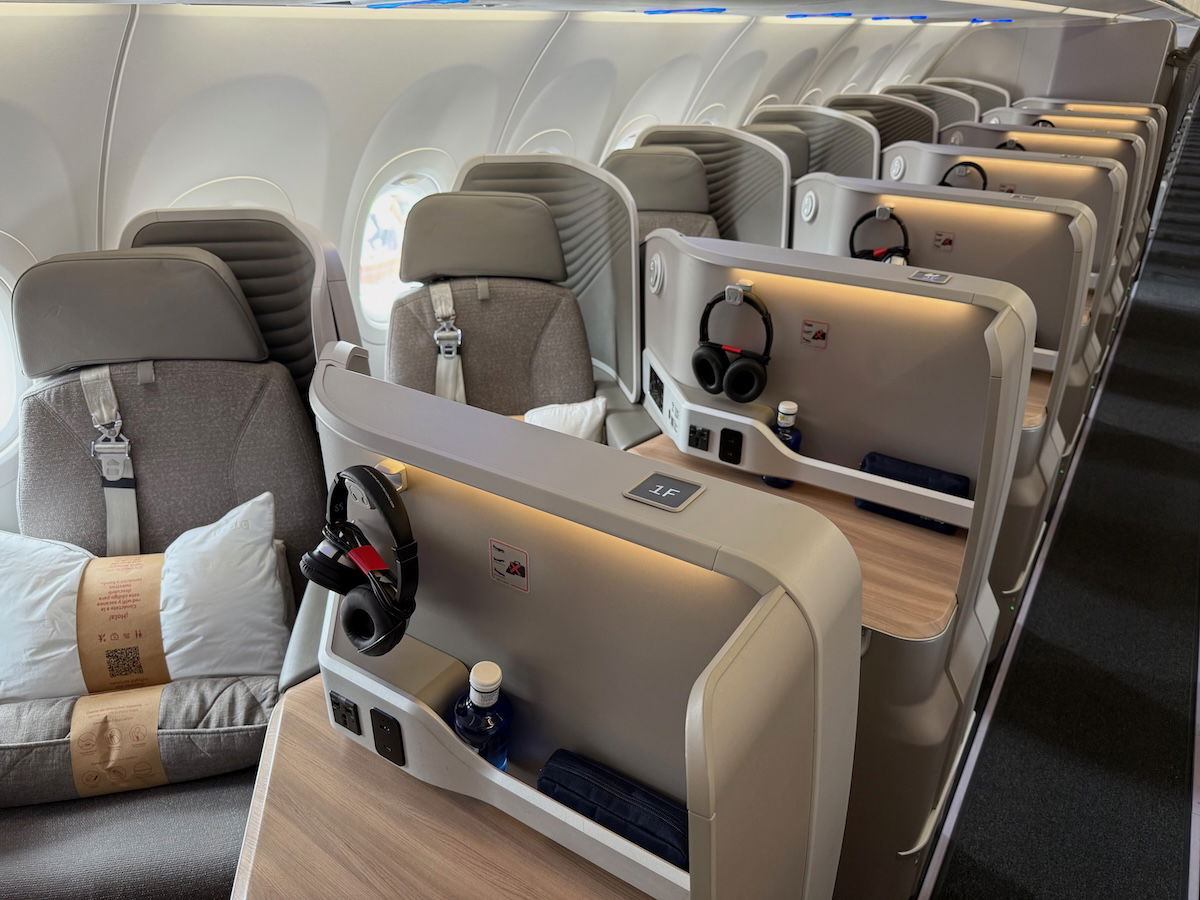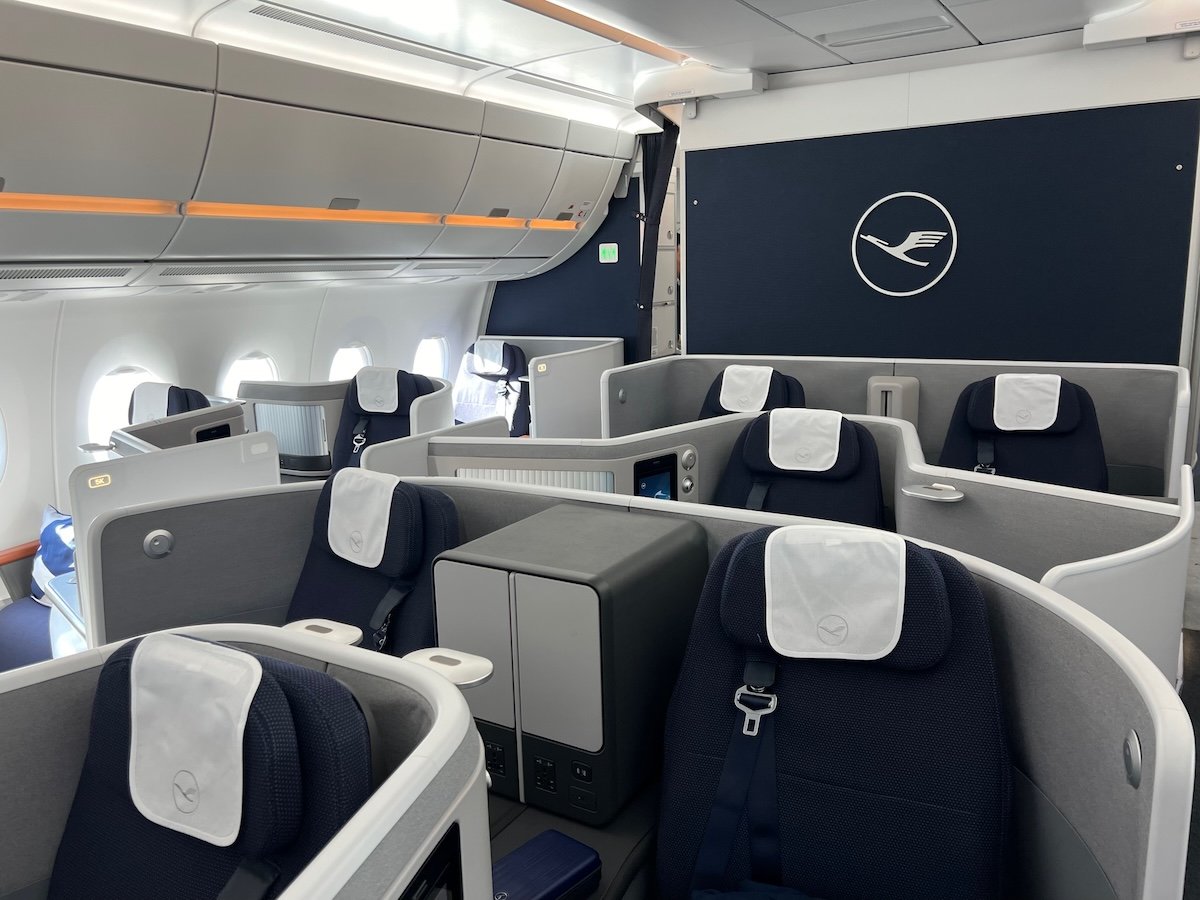In recent times, we’ve seen an increasing issue with airlines getting new seats certified with regulators, to the point that it’s in some situations causing planes to be delayed by years. Lufthansa is probably dealing with the worst of this, but even Delta is having issues with certification on its newest narrow body aircraft.
This isn’t some minor issue — we’re talking about billions of dollars worth of new planes being parked for extended periods of time, due to lack of certified seats. All of this says nothing of the other issues airlines are facing, with aircraft delivery delays, new seating supply chain delays, and more.
Anyway, in this post I’d like to discuss a question that has come up over and over — what exactly is causing these massive delays with getting airplane seats certified, and why is this a seemingly new issue? Let me explain, to the best of my knowledge…
In this post:
Airplane seats are incredibly expensive and complex
The first thing that’s important to understand is just how complex airplane seats are, especially those that you’ll find in first and business class on long haul aircraft. It’s easy to look at an airplane seat and not think of what really goes into it.
But some of these premium seats have thousands of parts. A business class seat can easily cost close to one hundred thousand dollars, while first class suites can cost significantly more than that.

It’s not just important for airplane seats to be comfortable and function well, but they also need to be incredibly safe, and that’s why the process of certifying these seats is so rigorous.
Generally speaking, specific seats needs to be certified for each type of aircraft. In other words, a particular seat would need to be certified separately for the Airbus A350 vs. Boeing 787. This is why there’s a huge advantage to choosing an “off the shelf” seat that has already been certified on a particular aircraft, since you won’t deal with these issues.
The Federal Aviation Administration (FAA) in the United States has a “16g rule,” as it’s called, requiring that certain crashworthiness standards are met, in the event that there is an emergency. This policy is based on research, accident data, and analysis, and is intended to provide increased protection for passengers in impact-survivable accidents.
Before anyone dismisses this all as unnecessary, let me remind everyone of when the Delta Connection CRJ-900 crash landed in Toronto earlier this year, and ended up coming to a stop upside down. Everyone managed to safely evacuate, as the seats all remained in place. That’s thanks in no small part to the exacting standards that come with aircraft seating certification.

Why airplane seat certification has become challenging
What has changed as of late that has made it more difficult for airlines to get new seats certified? There’s actually not much transparency about what exactly is causing these issues, though based on talking to some contacts, here’s what I’ve been able to piece together.
Long story short, it seems like we’re seeing the perfect storm of issues that are getting us to the point we’re at today:
- There’s more regulatory scrutiny when it comes to modifications to seat designs; in the past, modified seats may not have needed a full new certification, but that’s no longer the case
- While many airlines still use a “generic” product, the increasing customization that airlines are demanding often requires extra certification, for things like much larger entertainment screens, doors, privacy partitions, etc.
- We’re seeing an increasing number of new types of seats installed on new types of aircraft, and obviously that greatly increases the number of seats that need to be certified; for example, this includes airlines increasingly putting flat beds on narrow body planes
- There’s currently a huge backlog to performing certification tests, given that the same people who certify airplane seats also certify car seats; so just as we’ve seen staffing shortages in so many industries in recent years, that’s the case here as well

In some ways, the issue comes down to limitations on government efficiency, where there’s no way to grease hands and get something done quickly. Everyone has to wait their turn, even if the test results are holding up billions of dollars worth of planes entering service.
I do think it’s worth mentioning just what a messy situation Lufthansa has gotten itself into. Thanks to the “incredible” customization of Lufthansa’s new Allegris business class, the seats are actually produced by three different seating manufacturers. As a result, the airline needs three separate sets of certifications.
Maybe that concept made sense a decade ago, when Allegris was first conceived, but at this point, I think just about anyone would look back and realize what a mistake that was.

It’s my understanding that these seating certification issues are increasingly changing the way that contracts are structured between airlines and aircraft manufacturers, in terms of which party assumes the risk for these kinds of delays.
Bottom line
Aircraft seat certification has become an increasingly big issue for airlines, and in some cases is causing brand new planes to be grounded for a year or more. This is a fairly new phenomenon, and it’s my understanding that it comes down to a combination of factors.
Regulators are increasingly scrutinizing the customization of seats, requiring separate certification when that may not have been needed in the past. On top of that, there’s a huge certification backlog, and with the number of new planes getting new types of seats, this is becoming complicated.
Lufthansa is suffering the most with these certification delays, though that seems largely self-induced, by choosing to install business class seats from three different manufacturers in a single cabin.
What do you make of this aircraft seat certification mess?





If only airlines would staff their executive ranks with people who came up through the ranks instead of generic business grads and lawyers they would anticipate these issues.
This is ironic because as a passenger and not a seat design expert, it seems that business class seats are getting *more* standardized: these days everyone seems to be converging on reverse herringbone.
Aside from doors I personally don't see much difference in any of the reverse herringbone seats out there (not that I've tried them all, or that I can compare side to side).
So I'm surprised that the reason for delays is from...
This is ironic because as a passenger and not a seat design expert, it seems that business class seats are getting *more* standardized: these days everyone seems to be converging on reverse herringbone.
Aside from doors I personally don't see much difference in any of the reverse herringbone seats out there (not that I've tried them all, or that I can compare side to side).
So I'm surprised that the reason for delays is from increasing customization. If my passenger experience applies to most pax, then it make more sense to just go with off the shelf. Unless you have something truly radical like a q-suite, no one is going to care about some slight change you make to your otherwise bog standard reverse herringbone seat that will only cost you extra money and delays while doing nothing to actually differentiate your product in passengers' minds.
This is a good example of how incompetent the Trump administration is. A normal Republican administration 15 years ago would have installed competent regulators at DoT and whatever other agencies regulate this stuff and then they would have instructed staff to relax the certification process to shorten delays.
Trump comes in and installs a reality TV star who wants to go on TV and argue and then DOGE fires a ton of staff at the...
This is a good example of how incompetent the Trump administration is. A normal Republican administration 15 years ago would have installed competent regulators at DoT and whatever other agencies regulate this stuff and then they would have instructed staff to relax the certification process to shorten delays.
Trump comes in and installs a reality TV star who wants to go on TV and argue and then DOGE fires a ton of staff at the agencies so they can no longer get any work done and here we are. Even though they think they are pro-business, it really just makes it so government can't function in the essential things it does. We see this with oil and gas leases, FEMA response to disasters etc.
As this is an aviation/travel blog, we'll stay on point. So, let's not forget the attempted dismantling of NOAA, the National Weather Service, the National Hurricane Center, and the Space Weather Prediction Center. But, my favorite is the de-orbiting of billions of dollars of operational meteorological satellites.
Ben, you make good points. For instance, Hawaiian had the J suite approved and flying, while AA was still awaiting approval of the exact same seat in its 787-9P. AA had to go through some sort of armrest lowering evacuation application BS. The FAA is getting overly cautious after THEY screwed up on the max. i’s dotted and t’s crossed. That will make it safer! Good luck to UA when they install the exact same seat in their 787’s.
Who needs all of this regulation?
We should be reducing burdens on businesses and costs on consumers in order to increase the United States' global competitiveness and prosperity. This reduction on compliance costs means that businesses can redirect resources toward innovation and productivity.
Sure, that will cost the life of a few thousand of people every year, but who's kidding - the government is not for the people, it's for the corporations!
-MAGA
that you picked up someone else's comment and my reply to build an article.
I always want to keep you with a long list of things to write about, Ben. keep up the good work.
As to your point about risk with contracts, in general with any product, if it is customized by one customer beyond the ability of the manufacturer to incorporate those designs at their structural core into other products for other customers,...
that you picked up someone else's comment and my reply to build an article.
I always want to keep you with a long list of things to write about, Ben. keep up the good work.
As to your point about risk with contracts, in general with any product, if it is customized by one customer beyond the ability of the manufacturer to incorporate those designs at their structural core into other products for other customers, the customer assumes the risk.
LH heavily customized beyond what their multiple seat manufacturers were willing to do.
Manufacturers will test for multiple screen sizes, doors and also for combinations of trim but other items such as cupholders and added cubbyholes inside the suite increase risks.
this will get sorted out and airlines and manufacturers will learn
What are the current supply chain issues with aircraft seats? While there were supply chain issues across the board during covid, this is the only item I can recall recently that is still suffering issues.
If only Lufthansa had chosen a decent off the shelf reverse herringbone seat (like BA or Etihad did) their entire fleet could have been reconfigured by now instead of the mess they are in.
I'm fine with bespoke seats (Qsuite!) but at least Qsuites stick to one manufacturer lol
This is a good point, and I think highlights just how awful Lufthansa’s strategy and planning have been. As I recall, BA when they selected the Club Suites product, specifically cited concerns about certification and installation when asked why they went for an off-the-shelf option.
This was AFTER Lufthansa had announced Allegris, and pre-pandemic… so despite the current situation being a ‘perfect storm’, clearly many airlines could see it coming.
LH basically chose a slight variation of Safran Optima but from 3 different vendors. Most of the seats are already worse than competetion from 10 years ago and the front seats are easy to certify. Much ado about nothing so they deserve the result of their incredible incompetence. They could have chosen any off the shelf good staggered or reverse herringbon seats or if the really wanted high density there's the Recaro or the Optima.
It would be interesting to know why/how UA is so good at this. They completed a complete Polaris suite, Premium Plus & Economy Plus installation in six years (including Covid) on 204 int'l wide body aircraft fleet including 763s (2 configurations), 764s, 772s, 773s, 788s, 789s & 78Xs. They did this at 3X the rate DL has been doing it on their int'l wide body aircraft. I wonder if it is related to which party...
It would be interesting to know why/how UA is so good at this. They completed a complete Polaris suite, Premium Plus & Economy Plus installation in six years (including Covid) on 204 int'l wide body aircraft fleet including 763s (2 configurations), 764s, 772s, 773s, 788s, 789s & 78Xs. They did this at 3X the rate DL has been doing it on their int'l wide body aircraft. I wonder if it is related to which party is contractually liable for delays as referenced in the article.
Lucky timing. Surely seat certification was much easier before the pandemic.
chris w says, "Lucky timing. Surely seat certification was much easier before the pandemic."
No doubt, but DL started their D1 mods at about the same time.
the pandemic didn't change the calculus. It was the change in complexity of seats and the realization - undoubtedly supported by data - that many current seat designs do not pass crash tests.